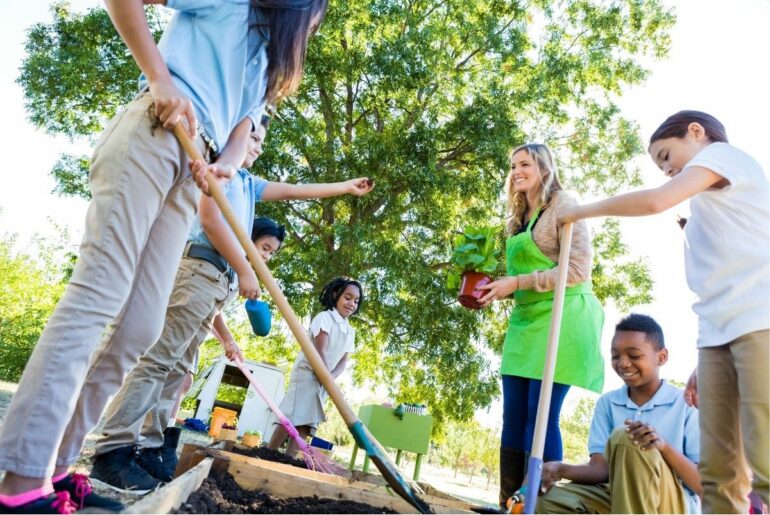School garden programs where kids learn firsthand where food comes from are becoming more common in elementary schools, but they tend to drop off by high school. That’s because in many ways, “We are educating kids to pass tests; we’re not educating them to live healthy lives,” argues Danielle Nierenberg, president of the nonprofit organization Food Tank.
There are so many ways that food and agriculture education can benefit students of any age. Garden programs give kids a personal relationship to healthy foods in a way that standard health and nutrition curriculum just can’t: “Just as we have learned that rote memorization is no longer the right way to teach kids math or English skills, the same is true with nutrition education,” points out Curt Ellis, CEO of FoodCorps, an organization that brings gardening and cooking programs to 350 schools across the country.
The benefits
These programs really do have an impact on students’ eating habits. An evaluation of FoodCorps found that at schools with regular, hands-on nutrition programs, students eat up to three times more fruits and vegetables during school lunch in general.
Garden programs can be an effective way to teach environmental sustainability as well, because of the personal connection. “We want to help them think critically about the way nutrition intersects with culture as well as the environment and farming. We want our students to understand how eating makes them a part of the natural world and not separate from it,” says Lindsey Dayton, senior manager of Food Ed., a hands-on program for New York high schoolers that delves into food production.
School garden programs can also give students the chance to apply other academic skills. Anna Canby Cash, a teacher who implements a hands-on garden curriculum in Oxnard, California, explains that “Students use math, science, and biology to measure and track their seedlings, they use language arts to document their work, make observations, and even create presentations for the community, and [they] use art skills to illustrate reports about their crops.”
The education opportunity extends to families, too. As Cash says of her young gardeners, “They show parents how to create healthy salads and snacks and introduce them to new vegetables like kale.”
How to get started
If you’re interested in getting a garden program started in your school, it’s crucial to get other community members involved from the start, including students, administrators, teachers, and maintenance and food-service staff. Even if your school doesn’t have enough outdoor space to build a garden, you can consider a local park, retirement home, vacant lot, or other community space.
Also keep in mind that in many areas there are existing resources that you can consult for gardening support, such as gardening clubs, master gardeners, USDA service centers, and cooperative extension programs. See more detailed tips on starting a school garden from USDA and KidsHealth.







